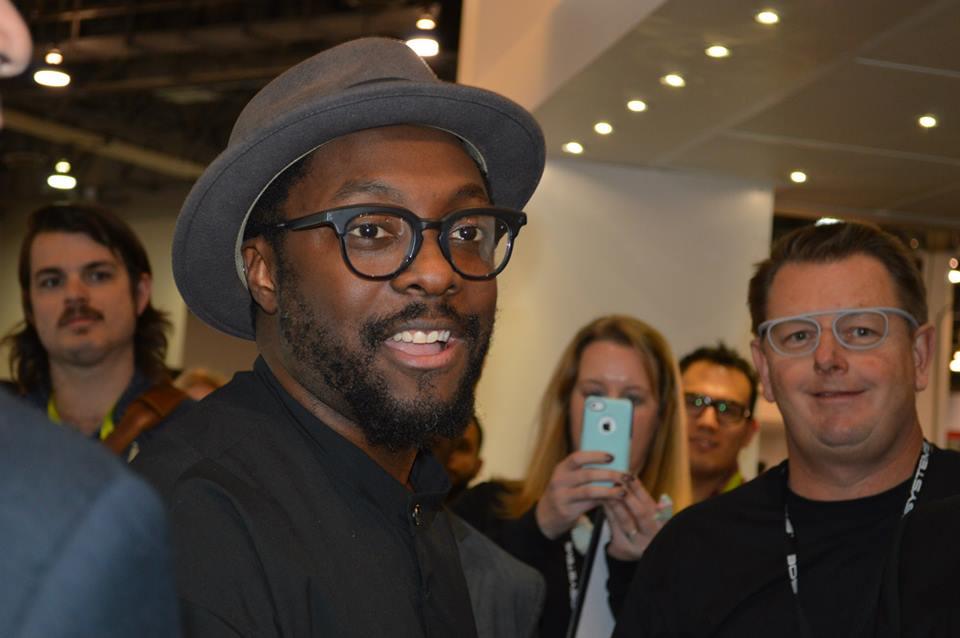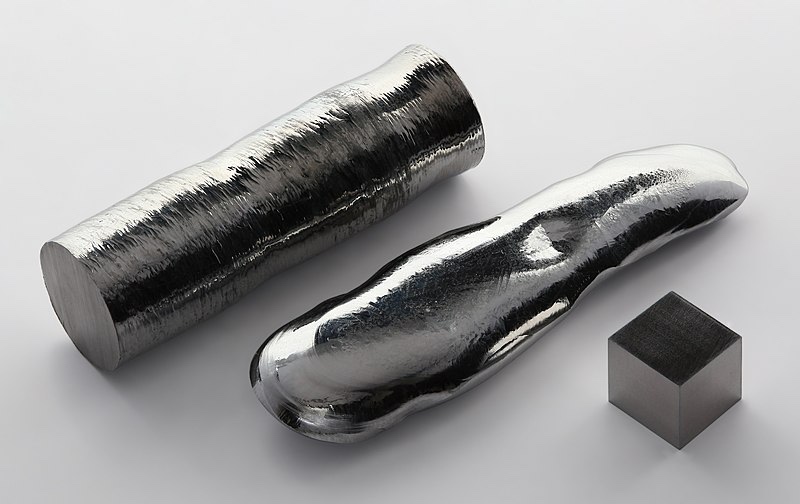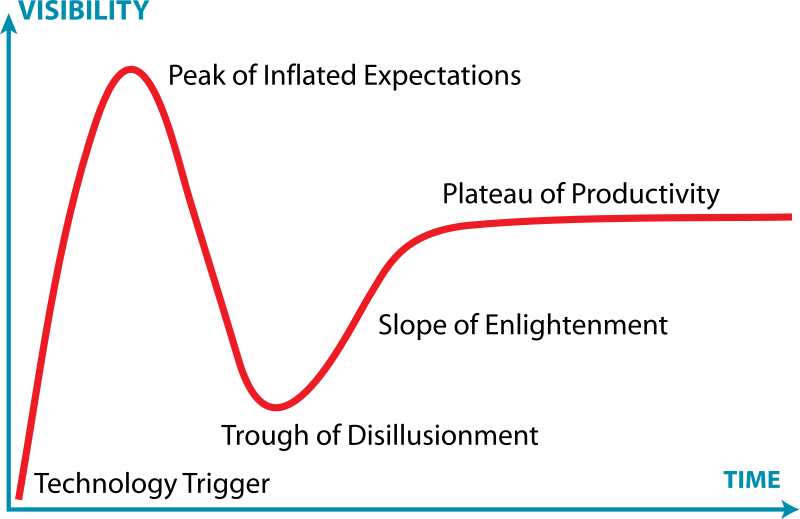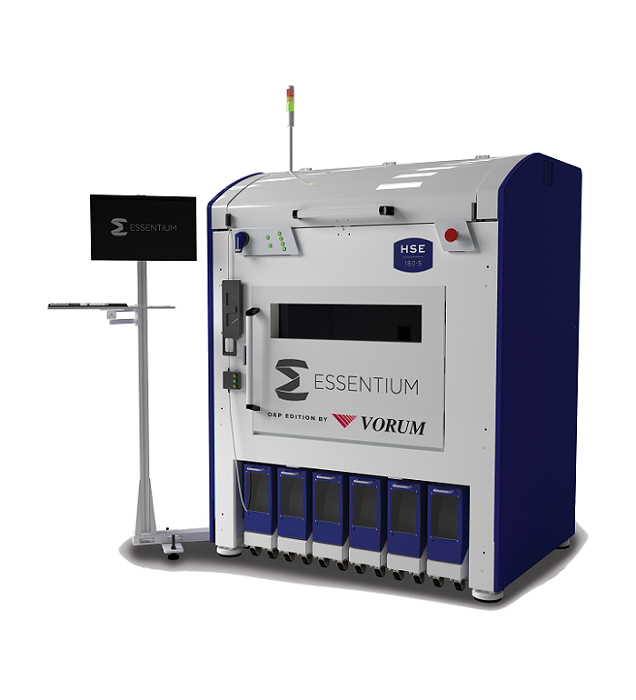3DPrint.com | The Voice of 3D Printing / Additive Manufacturing |
- Where is 3D Printing in Gartner’s Hype Cycle?
- Biocompatible Materials for 3D Printed Prosthetics in Development from Essentium & Vorum
- DARPA Tasks Elementum 3D to 3D Print World’s Rarest Metal
- 3DPOD Episode 104: Large Format 3D Printing with Caracol CEO Francesco De Stefano
| Where is 3D Printing in Gartner’s Hype Cycle? Posted: 09 May 2022 06:30 AM PDT Gartner´s Hype Cycle outlines five distinct phases of a technology’s lifecycle. We start with the Innovation Trigger, in which media initiates the spread of a technology. Subsequent success stories fuel a Peak of Inflated Expectation. When expectations sour, we end up in the Trough of Disillusionment. After this, the Slope of Enlightenment sees more adoption. Mainstream adoption happens when we reach the Plateau of Productivity. I really like the Gartner model, it’s a useful tool to think through trends that seem to be either glacial or incomprehensibly hectic. Trough of DisillusionmentWelcome to the Trough. SPAC binges have turned sour, with even credible SPAC firms now trading in the single digits. 3D Systems (NYSE: DDD) stock is at a 52 week low, even though the company’s pivot toward healthcare and bioprinting is lucid and has been done with aplomb. Materialise (Nasdaq: MTLS), which is a de facto monopoly on the software used for managing 3D printing, is also trading near a 52 week low. The stock of stalwart Stratasys (Nasdaq: SSYS) has halved in a month. Voxeljet’s (Nasdaq: VJET) stock is making the company look remarkably inexpensive. Its market cap is around what its revenues were last year. That’s an insanely low valuation, given that they are profitable and grew by 22 percent in Q4 last year. Head spinning is the best way to sum up the fall in 3D printing stock valuations. Startup funding has also evaporated. Idle chatter on picking up millions and tens of millions has resulted in desperation for some who missed the gravy train. Indeed, the tens of millions given liberally to companies over the last few years will not quickly be repeated. I told friends to raise A, B and C rounds in one, because we were never going to be this loved again. But, the speed of our fall from grace surprised me.
Low valuations of public 3D printed stocks means that funding requests to banks and investors for future potential revenues tomorrow under threat from real inflation today are looking riskier than they used to be. At the same time, exits are under threat through our now-abysmal, public track record. Corporates could have expected an injection of stock market excitement if they made 3D printing investments, but now this effect is questionable. We’re very likely to be transplanted by nanotech or quantum or something newer still as a fountain of excitement for the media. Yes, there are 3D printing stories, but they’re no longer ones where you can the feel bright eyes and wonder shine at you through their words. So, there was a 3D printing revolution, apparently.  will.i.am at 3D Systems Booth (image by Eddie Krassenstein – 3DPrint.com) Not everyone has a 3D printer. In fact, only very few people have one. Of those millions, few use them everyday. A lot of projects and corporate optimism have soured in the face of the limitations of our expensive technology—which hasn’t really improved a lot over the past decade or so. We’re only sparingly utilized in manufacturing. And, if we are used in manufacturing, it’s by a guy who is dusting off parts he just cut off a build plate with a saw. You could perhaps think that we are dawdling in the Trough of Disillusionment.  MakerBot founders (left to right) Adam Mayer, Zach Smith and Bre Pettis with the final MakerBot Cupcake prototypes. But, do not mind the electric sheep, the poor herds have just their greed and algorithms to guide them. The stock market looks dire and we might be not the flavor of the month with investors generally. But we’re fine. If we look at signals from the market itself, our industry is slowly but surely extending its tentacles into manufacturing and commerce. Slope of EnlightmentWe’re a 3D printing evolution not a revolution. We’re slowly but surely catering to the needs of more and more companies in more and more ways. More firms have printers that are being used to duck tape all sorts of problems. We’re solving business problems as they occur. There are instances where the improvisational use of 3D printers to solve crises—to create parts in a pinch—have more than made up for investments into them. AM is becoming standard in the commercial space industry, used extensively in satellite, drone, and defense manufacturing. Our growth in orthopedics continues apace, and that is a revolution that has taken 30 years to happen. I see more and more examples of highly optimized industrial components that are being made with 3D printing and can only be made in that way. AM is growing in popularity in dental, as well, and have been pretty much standard in a lot of jewelry and hearing aid applications. For a lot of applications, 3D printing is actually a very useful technology that shows real return on investment and real value as it grows. Based on the growth I’m seeing in private firms and across the industry, we’re not in the trough. We’re actually very far along the Slope of Enlightenment. Industrial adoption is growing, but perhaps not in the way we’d want it to. This is what may cloud your view. Now, don’t get me wrong. I’d prefer a kind of Google—where the masseuses are millionaires—kind of a scene. The snacks will be better and everyone will have pools. And I want you to have a pool. I’d hate to see the number of people I know with Lamborghinis stabilize. I’m rooting for you. But, what if we take a step back, and think. We drank the Kool-Aid, too. Now, we must wake up. We must realize that, just because some journalists started using the term “3D printing revolution” doesn’t mean it’s the right way to think of our technology’s development. A revolution builds and then suddenly changes everything. It breaks, shatters, and divides a timeline into a definitive before or after. No one has printers and then everyone has 3D printers. Did you really think that this was going to happen?
Doctors still write prescriptions on paper. 134 years after contact lenses were first made and 74 years after, LASIK was developed, people still wear glasses. The fastest car in the world was electric in 1899. The first two successful English channel crossings were by balloon, as was the first air crash. The QR code was invented in 1994. However, in Spain where I live, it took a pandemic to make them commonplace… as stickers which link to menus. Rarely does the world work exactly as a metaphor. Rarely does a technology grow as you think it will. Some of the smartest people on Earth thought that the Segway was going to be “bigger than the internet.” Now it is something that occasionally ferries tourists around. Commonplace though are kids scooters with electric batteries that are used by millions to commute to work. Dean Kamen, the inventor of the Segway, also developed a revolutionary way to clean water. He sold his invention to Coca-Cola, hoping that the firm would use it to give inexpensive clean water to billions of people. Instead, the beverage giant uses it to power Freestyle machines at your local Five Guys. And not even every fast food place has a Freestyle. IBM Chairman Thomas Watson often ends up on “world’s dumbest quotes” lists because he said, "I think there is a world market for maybe five computers." First off, he said this in 1943. Secondly, with cloud computing becoming the norm, he may very well get proven right, in the long run. In short, we get the future wrong. And thinking of 3D printing in terms of a revolution is incorrect. 3D printing is a virus, not a revolution. 3D printing is something that spreads in a very directed way. We are the perfect method to make a part that solves a problem. If that problem is expensive enough, then we can supplant existing technologies which are more well known and cheaper. For that one perfect host, we are a perfect virus. But, if we try to infect a thousands others we may not take hold. But, for that one we can be everything and all to them, we can define them. The post Where is 3D Printing in Gartner’s Hype Cycle? appeared first on 3DPrint.com | The Voice of 3D Printing / Additive Manufacturing. |
| Biocompatible Materials for 3D Printed Prosthetics in Development from Essentium & Vorum Posted: 09 May 2022 06:00 AM PDT Industrial 3D printing company Essentium, Inc. is announcing its continued collaboration with Canadian CAD/CAM solutions provider Vorum, which provides end-to-end digital solutions for the global orthotics & prosthetics (O&P) market. The two companies will work to improve biocompatible 3D printing for O&P applications by introducing a line of biocompatible AM materials. Texas-based Essentium itself is ISO 9001:2015 and ITAR certified, and its materials have been proven to safely interact with human skin, which is critical for O&P patients who have to wear devices that touch their skin for long periods of time. Together, Essentium and Vorum will work to print biocompatible O&P devices that are affordable, comfortable, lightweight, and safe.
Essentium and Vorum first began working on 3D printed O&P solutions together in 2020, two years after Essentium 3D printed a super-strong prosthetic socket with partner BASF. The startup has long been interested in the O&P market; it even has a subsidiary brand called TriFusion Devices that’s focused on creating accessible prosthetics. Essentium’s materials can help create more advanced 3D printed O&P devices, like lightweight, comfortable prosthetic sockets that are strong and reliable. As 3D printing platforms and software solutions continue to advance, O&P clinicians are better equipped to efficiently design and create bespoke, yet affordable devices for their patients, faster than traditional methods of manufacturing are capable of delivering. According to the SmarTech Analysis report on “Medical Devices 2021: Market Opportunities for 3D printed Prosthetics, Orthotics, and Audiology Devices,” 3D printing is truly beginning to disrupt the healthcare industry “in varying degrees across different fields,” due to its ability to offer more customization and digitization, thus leading to improved patient outcomes and cost reduction. As for the O&P sector specifically, 3D printing ” is on the cusp of moving out of the R&D lab and into full scale commercialisation,” as more O&P startups begin to scale up and partner with established names in the AM industry. But, this ability to deliver functional, lightweight, comfortable O&P devices at a lower cost has majorly brought up the demand for biocompatible 3D printing materials with which to create the devices. As verified by certified, independent lab testing, the new materials that Essentium and Vorum are releasing meet ISO 10993 and US FDA guidance for intact skin surface devices. Additionally, the two companies co-commissioned a study, which they said prove that Essentium’s TPU 74D, PET-CF, PCTG, and PA-CF materials are non-cytotoxic, non-contact sensitive, and non-irritant, which means that O&P clinicians can use them to print devices will come into contact with human skin long-term.
This continuing partnership combines Essentium’s biocompatible materials and High-Speed Extrusion (HSE) 3D printing platform with Vorum’s Canfit CAD software for O&P solutions and SurePath methodology, which offers O&P clinicians a solid approach for adopting and implementing 3D printing, in addition to training and support. Despite the recent sting of the cancellation of its SPAC merger, Essentium is looking to the future and not the past. The startup is continuing to move forward with meaningful industry partnerships, first with blue laser developer NUBURU to developer copper 3D printing, and now with Vorum. I know we’re all curious to see what’s next for Essentium as it deals with the fallout of its IPO deal. The post Biocompatible Materials for 3D Printed Prosthetics in Development from Essentium & Vorum appeared first on 3DPrint.com | The Voice of 3D Printing / Additive Manufacturing. |
| DARPA Tasks Elementum 3D to 3D Print World’s Rarest Metal Posted: 09 May 2022 05:30 AM PDT Rhenium, the last of the stable elements to be discovered, is one of the scarcest elements in the Earth's crust. It has the highest melting point of any metal aside from tungsten, as well as the highest boiling point of any stable element; finally, it's the fourth-densest element. Its rarity and unique properties make it an extremely sought-after — and pricey — commodity, used most often in the manufacture of jet engines. Increasingly, rhenium is also in-demand for rocket and missile propulsion systems.  The Defense Advanced Research Projects Agency (DARPA), one of the U.S. federal government's oldest and most influential R&D organizations, has awarded a Direct to Phase II Small Business Innovation Research (SBIR) contract to Elementum 3D, so that the latter organization can develop an additive manufacturing (AM) method for rhenium applications. The same qualities that make the metal so valuable also make it a challenge to manipulate via conventional metallurgical techniques. Rhenium's high melting point renders it especially expensive to work with, and also causes it to be quite susceptible to work hardening. As such, the metal is almost always used as an alloy with other metals, mainly tungsten and nickel. One of the main purposes of the grant DARPA has awarded to Elementum is to develop solutions using rhenium as a base, rather than just as an alloy. The SBIR program is a U.S. Small Business Administration (SBA) grant program that doles out about $2.5 billion a year to fund R&D by small businesses. The largest share of the money ($1 billion) is, unsurprisingly, spent by the Department of Defense, with the remaining $1.5 billion going to institutions such as the National Institute of Health (NIH) and the Department of Agriculture. SBIR Phase II grants are for "up to $1 million, for as many as 2 years". Companies are awarded Direct to Phase II grants when they demonstrate that they've finished Phase I stages with non-SBIR money. This means that Elementum has already documented promising results with the earliest phases of research into 3D-printed rhenium.  Elementum 3D, which specializes in maximizing the repertoire of metal solutions available for the AM sector — especially for laser powder bed fusion (LPBF) 3D-printing — has received SBIR funding on at least three other projects. The company received Phase I funding from NASA for a project completed in 2020: a hot-fire test of a metal 3D-printed fuel injector, in collaboration with Masten Space Systems. Elementum later received two Phase I contracts, in 2021; one was again from NASA, to develop AM techniques for soft magnetic materials. The other came from the U.S. Navy, to develop modeling frameworks for 3D-printed metal alloys. A part of Elementum's latest, Phase II contract, with DARPA, is that the latter organization — assuming it likes the results — may offer Elementum a contract to scale up the testing for eventual commercial 3D-printing of rhenium. This is the latest in a series of moves by U.S. military and intelligence investment funds to influence markets for 3D-printing materials, especially metals. As I noted the other day, that could be a signal that the AM sector as a whole is on the cusp of both scaling up and consolidating. It's of course too soon to say whether either of those things turn out to be the case, but a variety of other factors, also primarily geopolitical, hint in that direction as well. The post DARPA Tasks Elementum 3D to 3D Print World’s Rarest Metal appeared first on 3DPrint.com | The Voice of 3D Printing / Additive Manufacturing. |
| 3DPOD Episode 104: Large Format 3D Printing with Caracol CEO Francesco De Stefano Posted: 09 May 2022 05:00 AM PDT Francesco De Stefano was a consultant before he came to Caracol. You’ll notice that when he answers questions about the market and the future of his firm. He had to learn a lot of other things during his time helming the large format AM startup, however. Francesco talks to us about the challenges of printing large parts, the applications, the journey his company has taken and the possibilities. The post 3DPOD Episode 104: Large Format 3D Printing with Caracol CEO Francesco De Stefano appeared first on 3DPrint.com | The Voice of 3D Printing / Additive Manufacturing. |
| You are subscribed to email updates from 3DPrint.com | The Voice of 3D Printing / Additive Manufacturing. To stop receiving these emails, you may unsubscribe now. | Email delivery powered by Google |
| Google, 1600 Amphitheatre Parkway, Mountain View, CA 94043, United States | |





